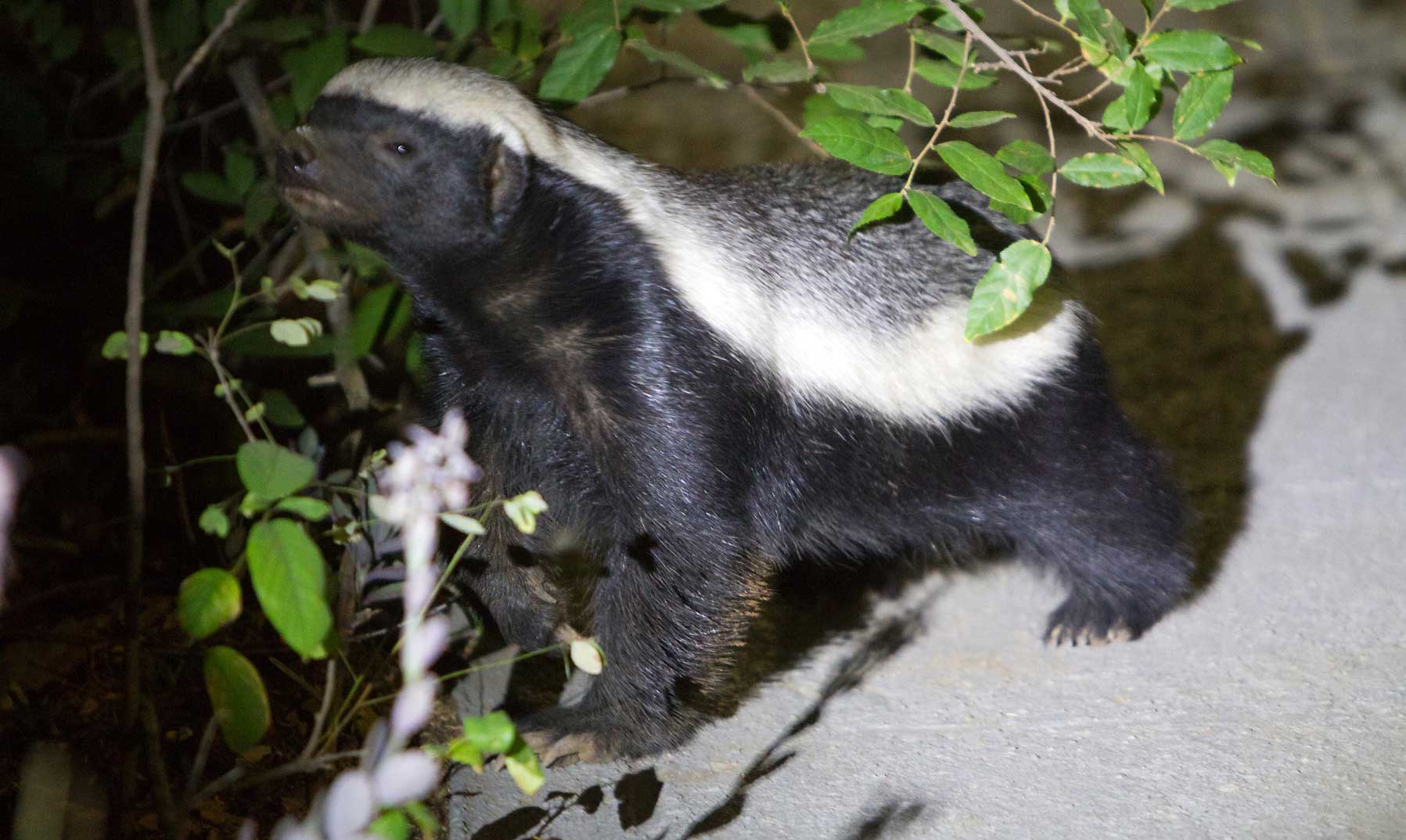
Powerful lion prides, agile leopards, moody bovids and elephants in musth. They’re all mammals that we hold in high esteem and respect a great deal. They’re the crew that are tougher than tough and can hold their own in the wild. But, there’s a creature that we underestimate. An intelligent, industrious and fearless species – the honey badger. This ratal species has built up quite a reputation for itself and while being notorious for their antics, they’ve become one of the most loved creatures of the safari world.
Let’s find out more about this ferocious, yet adorable little beast!
1. These mini-beasts might be short in size and stature, but more than make up for it with their ferocious attitude. Predators would rather avoid preying on a badger because it gives such a fight and it also has a tough skin housing a flexible body that can actually move beneath the skin. This comes in handy if in the jaws of a predator. They can writhe and wriggle out of anything.
2. Looks wise, the honey badger is quite a strange looking animal. Its coarse fur is black, apart from a dirty grey mantle of fur running down its back to the base of the tail. The colour varies between individuals and can become darker with age.

3. Honey badgers are relentless carnivores and have blade-like claws that they use for digging and excavating and flushing. Their claws dig out prey from burrows. Their diet comprises insects, frogs, tortoises, turtles, snakes and even birds. They’ve also been known to displace lions from their kills. But they’re not only carnivorous – they also eat bulbs, fruits and more.
4. There is a famous honey badger called Stoffel who resides in a rehabilitation centre in Hoedspruit. He was raised by humans and thus couldn’t really fend for himself in the wild. He roams free with two other honey badgers, but is notorious for escaping from his area. He ended up fighting with lions and thus earned quite the reputation, so much so that a documentary was made about him!
5. The honey badger is otherwise known as the ratel species. This actually derived from the Dutch word which means rattle. Honey badgers have a taste for honey, so the naming convention is thought to have derived from the rattle sound of the honeycomb.
6. Honey badgers can simply sleep off the venom from toxic snakes. Their system is immune to the venom, much like the mongoose, hedgehog, secretary bird and other snake eating birds.
7. In southern Africa, honey badger cubs are born throughout the year and the mother has no particular breeding season. The female moves the cubs to a new den site every couple of days. When the babies are born, they are blind and helpless. The female uses her long claws to dig a massive hole in the ground where she will give birth. Within about 10 months, the young badger reaches adult size. The male honey badger has zero role to play in raising their young and leads quite the bachelor lifestyle!
8. Interestingly enough, the scientific name for the honey badger is mellivora capensis and the honey badger is the only member of the genus Mellivora. The honey badger is actually quite closely related to the weasel.
9. To mark its territory, the ratal species spreads a foul smelling noxious liquid within its “turf”. If under threat, the honey badger will immediately release this bad smell which warns predators to stay away. It’s not a long lasting smell like a that of a skunk, but it’s not the greatest smell.
10. Honey badgers are found in abundance throughout southern Africa, but Africa on Foot in the Kruger seems to have these nocturnal critters constantly visiting the lodge after dinner time. As a matter of fact, this camp was used as a base to film a documentary about the honey badgers.


